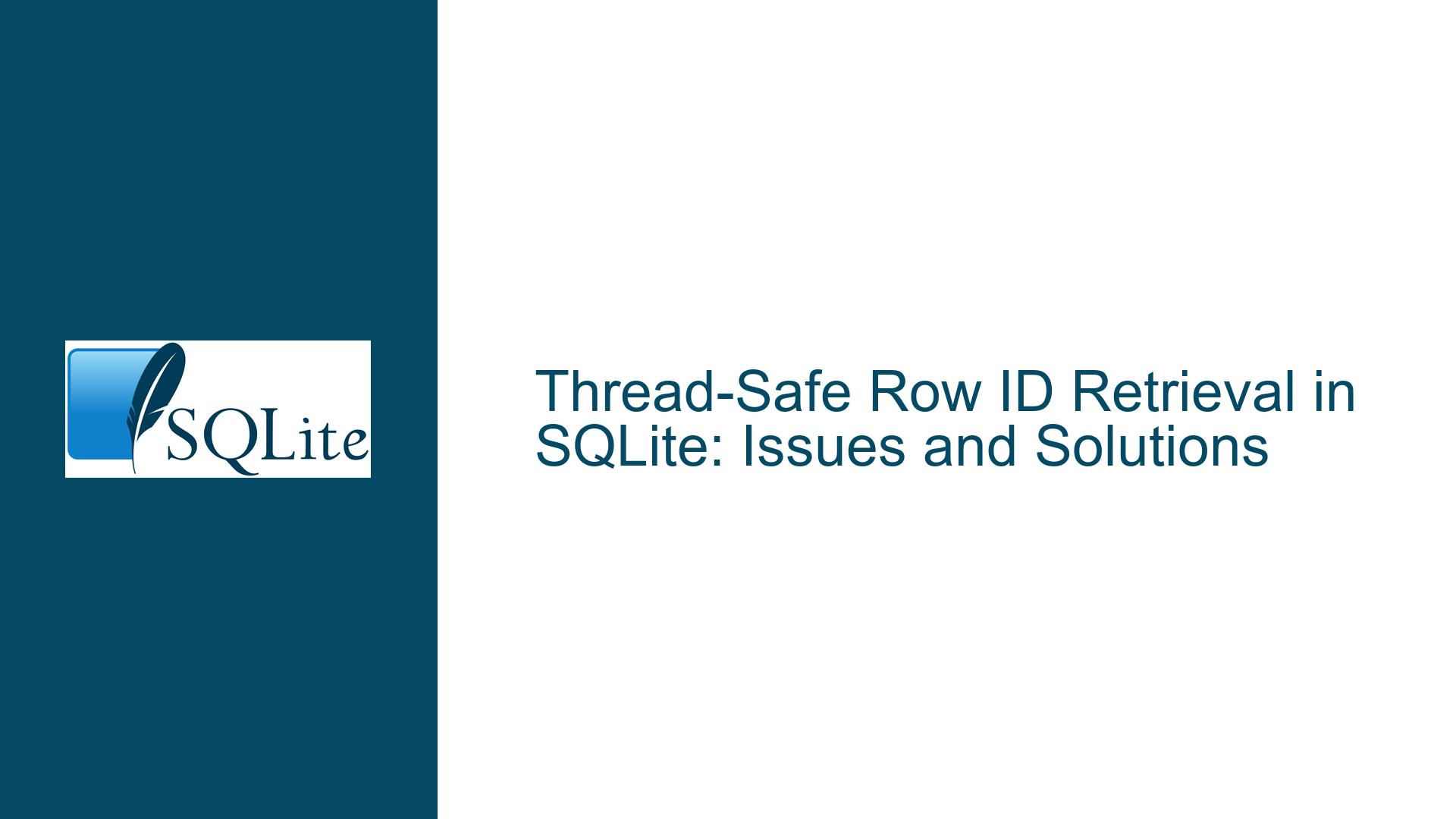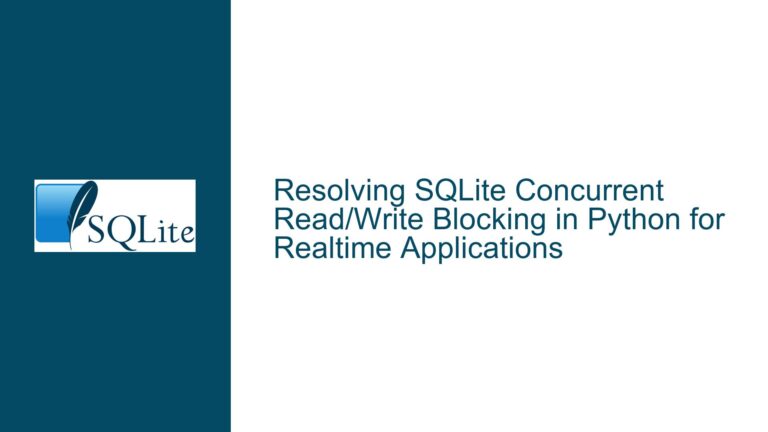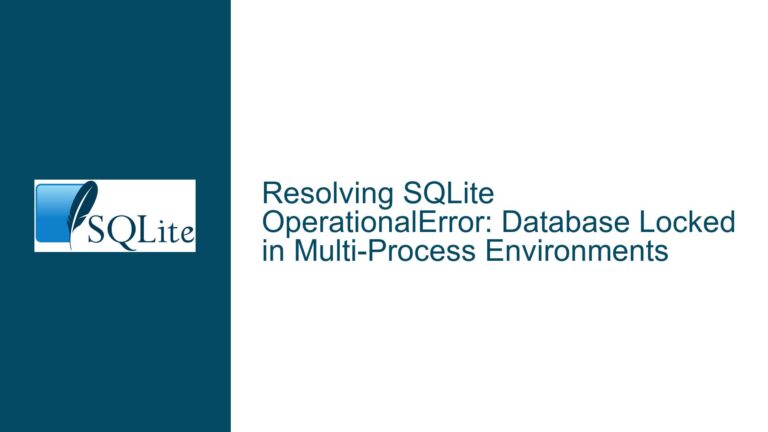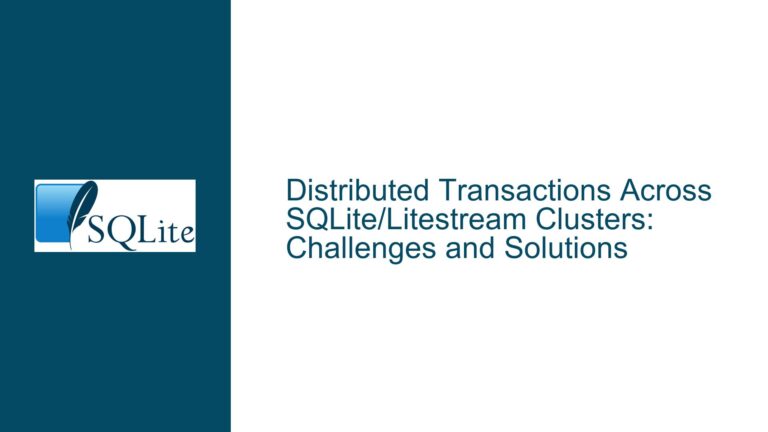Thread-Safe Row ID Retrieval in SQLite: Issues and Solutions
Understanding the Thread-Safe Retrieval of Insertion Row IDs in SQLite
The core issue revolves around the thread-safe retrieval of the last inserted row ID in SQLite, particularly in a multi-threaded environment where multiple threads may attempt to insert data concurrently. The challenge is to ensure that each thread can reliably obtain the row ID of the row it just inserted without interference from other threads. This is complicated by SQLite’s architecture, where the last inserted row ID is a connection-wide attribute, making it susceptible to race conditions when multiple threads share the same connection.
SQLite provides the sqlite3_last_insert_rowid() function to retrieve the row ID of the most recent insert operation on a given database connection. However, this function is not inherently thread-safe when multiple threads share the same connection. The discussion highlights several approaches to address this issue, including the use of mutexes, serialized mode, and separate connections per thread. Each approach has its trade-offs in terms of performance, complexity, and reliability.
The Concurrency and Isolation Challenges in Multi-Threaded SQLite Applications
The primary challenge arises from SQLite’s design, where the last inserted row ID is tied to the database connection rather than the individual statement or thread. This means that if multiple threads share the same connection, they can inadvertently overwrite or interfere with each other’s last inserted row ID values. This is particularly problematic in applications where threads need to perform inserts and immediately retrieve the corresponding row IDs for further processing.
One proposed solution is to use the RETURNING clause in the INSERT statement, which allows the row ID to be returned directly as part of the query execution. However, this approach was found to be significantly slower, with a performance penalty of over 20%. Another approach is to use a mutex to synchronize access to the connection, ensuring that only one thread can perform an insert and retrieve the row ID at a time. While this approach works, it introduces additional complexity and potential performance bottlenecks.
The discussion also explores the use of separate connections for each thread, which inherently isolates the last inserted row ID values. However, this approach requires significant changes to the application’s architecture and may not be feasible in all scenarios. Additionally, it raises questions about transaction management, as transactions are connection-specific, and coordinating transactions across multiple connections can be challenging.
Effective Strategies for Thread-Safe Row ID Retrieval in SQLite
To address the thread-safe retrieval of insertion row IDs in SQLite, several strategies can be employed, each with its own set of trade-offs. The first strategy is to use a mutex to synchronize access to the database connection, ensuring that only one thread can perform an insert and retrieve the row ID at a time. This approach is relatively straightforward but can introduce performance bottlenecks, especially in high-concurrency scenarios.
Another strategy is to use the RETURNING clause in the INSERT statement, which allows the row ID to be returned directly as part of the query execution. While this approach eliminates the need for a mutex, it was found to be significantly slower, with a performance penalty of over 20%. This makes it less suitable for performance-critical applications.
A more robust approach is to use separate connections for each thread, which inherently isolates the last inserted row ID values. This approach requires significant changes to the application’s architecture but provides a clean and reliable solution to the thread-safety issue. Each thread can perform inserts and retrieve row IDs without interference from other threads, as each connection maintains its own last inserted row ID value.
In addition to these strategies, the discussion highlights the importance of proper transaction management in multi-threaded SQLite applications. Transactions are connection-specific, and coordinating transactions across multiple connections can be challenging. One approach is to use a single connection for all threads, with a large transaction covering all the lookups and inserts. However, this approach can lead to performance issues, as inserts that are not within a larger transaction are very slow.
Another approach is to use a connection pool, where each thread can borrow a connection from the pool, perform its inserts and retrievals, and then return the connection to the pool. This approach provides a balance between performance and thread-safety, as each thread can perform its operations without interference from other threads, while also benefiting from the performance improvements of using a larger transaction.
In conclusion, the thread-safe retrieval of insertion row IDs in SQLite is a complex issue that requires careful consideration of the application’s architecture, performance requirements, and concurrency needs. By employing one or more of the strategies discussed above, developers can ensure that their applications can reliably retrieve row IDs in a multi-threaded environment, while also maintaining optimal performance and scalability.






